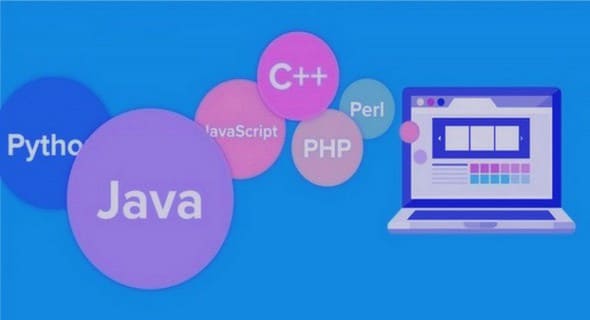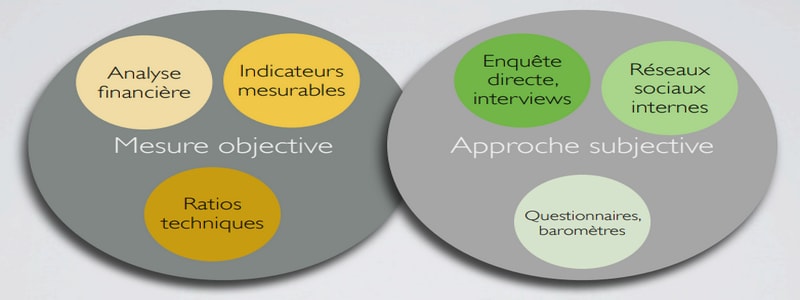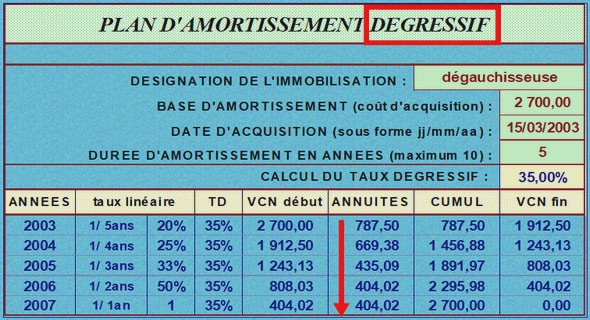Course wireless application environment specification
Contents
1. SCOPE
2. DOCUMENT STATUS
2.1 COPYRIGHT NOTICE
2.2 ERRATA
2.3 COMMENTS
3. REFERENCES
3.1 NORMATIVE REFERENCES
3.2 INFORMATIVE REFERENCES
4. DEFINITIONS AND ABBREVIATIONS
4.1 DEFINITIONS
4.2 ABBREVIATIONS
5. WAE SPECIFICATION
5.1 GENERAL WAE FEATURES
5.1.1Session Layer Interface
5.1.2Basic Authentication Scheme
5.1.3URL Schemes
5.1.4User Agent Characteristics
5.1.5Wireless Markup Language
5.1.6WMLScript
5.1.7WAE User Agents
5.1.7.1 WTA User Agent
5.1.7.2 WML User Agent
5.1.8 WAE Media Types
5.1.8.1 Encoded WML format
5.1.8.2 Encoded WMLScript format
5.1.8.3 The Electronic Business Card Format (vCard 2.1)
5.1.8.4 The Electronic Calendar and Scheduling Exchange Format (vCalendar 1.0)
5.1.8.5 Images
5.1.8.6 Multipart Messages
Channels
5.1.8.8 Service Indication
6. WIRELESS BITMAP FORMAT
6.1 WBMP TYPE IDENTIFIERS
6.2 WBMP SYNTAX
6.3 HEADER DATA STRUCTURE
6.3.1Multi-byte Integer format
6.3.2Header Formats
6.4 IMAGE DATA STRUCTURE
6.5 MINIMAL REQUIRED IMPLEMENTATION
7. CALENDAR AND PHONE BOOK
7.1 DATA FORMATS
7.2 DATA TRANSMISSION
7.2.1WDP Datagram Data Exchange
7.2.2WSP Data Exchange
7.3 REQUIRED TERMINAL BEHAVIOUR
8. CLIENT HEADER HANDLING
ACCEPT-CHARSET: ISO-8859-1
APPENDIX A: SPECIFICATION OF WELL-DEFINED WBMP TYPES
APPENDIX B: STATIC CONFORMANCE REQUIREMENT
1. WAE USER AGENT
1.1 GENERAL WAE FEATURES
1.1.1Session Layer Interface
1.1.2Basic Authentication Scheme
1.1.3URL Schemes
1.1.4User Agent Characteristics
1.1.5Wireless Markup Language
1.1.6WMLScript
1.1.7WAE User Agents
1.1.8WAE Media Types
1.2 WBMP
1.2.1WBMP Type Identifiers and Syntax
1.2.2Header Data Structure
1.2.3Image Data Structure
1.2.4Minimal Required Implementation
1.3 CALENDAR AND PHONE BOOK
1.3.1Data Formats
1.3.2Data Transmission
1.3.3WDP Datagram Data Exchange
1.3.4WSP Data Exchange
1.3.5Required Terminal Behavior
1.4 CLIENT HEADER HANDLING
2. STATIC CONFORMANCE REQUIREMENT – WAE SERVER
2.1 GENERAL WAE FEATURES
2.1.1Session Layer Interface
2.1.2Basic Authentication Scheme
2.1.3URL Schemes
2.1.4User Agent Characteristics
2.1.5Wireless Markup Language
2.1.6WMLScript
2.1.7WAE User Agents
2.1.8WAE Media Types
2.2 CALENDAR AND PHONE BOOK
2.2.1Data Formats
2.2.2Data Transmission
2.2.3WDP Datagram Data Exchange
2.2.4WSP Data Exchange
1. Scope
Wireless Application Protocol (WAP) is a result of continuous work to define an industry wide specification for developing applications that operate over wireless communication networks. The scope for the WAP Forum is to define a set of specifications to be used by service applications. The wireless market is growing very quickly and reaching new customers and services. To enable operators and manufacturers to meet the challenges in advanced services, differentiation and fast/flexible service creation, WAP defines a set of protocols in transport, session and application layers. Wireless Application Environment (WAE) is part of the WAP Forum’s effort to specify an application framework for wireless terminals such as mobile phones, pagers, and PDAs. The framework extends and leverages other WAP technologies, including WTP and WSP, as well as other Internet technologies such as XML, URLs, scripting, and various media types. The effort enables operators, manufacturers, and content developers to meet the challenges in building advanced and differentiating services and implementations in a fast and flexible manner.
2. Document Status
This document is available online in the following formats:
•PDF format at http://www.wapforum.org/.
2.1 Copyright Notice
© Copyright Wireless Application Forum Ltd, 1999. All rights reserved.
2.2 Errata
Known problems associated with this document are published at http://www.wapforum.org/.
2.3 Comments
Comments regarding this document can be submitted to the WAP Forum in the manner published at http://www.wapforum.org/.
3. References
3.1 Normative References
[RFC822] « Standard for the Format of ARPA Internet Text Messages », STD 11, RFC 822, D. Crocker, August 1982.
URL: http://www.ietf.org/rfc/rfc822.txt
[RFC2045] « Multipurpose Internet Mail Extensions (MIME) Part One: Format of Internet Message Bodies », N.
Freed, et al., November 1996. URL: http://www.ietf.org/rfc/rfc2045.txt
[RFC 2046] « Multipurpose Internet Mail Extensions (MIME) Part Two: Media Types »,N. Freed, N. Borenstein,
November 1996.
URL: http://www.ietf.org/rfc/rfc2046.txt
[RFC2068] « Hypertext Transfer Protocol – HTTP/1.1 », R. Fielding, et al., January 1997.
URL: http://www.ietf.org/rfc/rfc2068.txt
[RFC2119] « Key words for use in RFCs to Indicate Requirement Levels », S. Bradner, March 1997.
URL: http://www.ietf.org/rfc/rfc2119.txt
[RFC 2387] « The MIME Multipart/Related Content-type », E. Levinson, August 1998
URL: http://www.ietf.org/rfc/rfc2387.txt
[VCARD] « vCard – The Electronic Business Card », version 2.1,The Internet Mail Consortium (IMC), September 18,1996, http://www.imc.org/pdi/vcard-21.doc
3.2 Informative References
[RFC1808] « Relative Uniform Resource Locators », R. Fielding, June 1995.
URL: http://www.ietf.org/rfc/rfc1808.txt
[RFC2396] « Uniform Resource Identifiers (URI): Generic Syntax », T. Berners-Lee, et al., August 1998.
URL: http://www.ietf.org/rfc/rfc2396.txt.
[UNICODE] « The Unicode Standard: Version 2.0 », The Unicode Consortium, Addison-Wesley Developers Press,1996. URL: http://www.unicode.org/
[XML] « Extensible Markup Language (XML), W3C Proposed Recommendation 10-February-1998, REC-xml19980210 »,T. Bray, et al, February 10, 1998. URL: http://www.w3.org/TR/REC-xml
4. Definitions and abbreviations
All non-trivial abbreviations and definitions used in this document are listed in the following sections. The definitions section includes description of general concepts and issues that may be fully defined in other documents. The purpose of this section is merely to advise the reader on the terminology used in the document.
4.1 Definitions
The notation used in the specification part of this document uses the common elements defined here.
The key words « MUST », « MUST NOT », « REQUIRED », « SHALL », « SHALL NOT », « SHOULD », « SHOULD NOT », »RECOMMENDED », « MAY » and « OPTIONAL » in this document are to be interpreted as described in [RFC2119].Author – an author is a person or program that writes or generates WML, WMLScript or other content.
Bytecode – content encoding where the content is typically a set of low-level opcodes (ie, instructions) and operands for a targeted hardware (or virtual) machine.Client – a device (or application) that initiates a request for connection with a server. Client Server Communication – communication between a client and a server. Typically the server performs a task (such as generating content) on behalf of the client. Results of the task are usually sent back to the client (eg, generated content.) Content – synonym for data objects.
Content Encoding – when used as a verb, content encoding indicates the act of converting a data object from one format to another. Typically the resulting format requires less physical space than the original, is easier to process or store, and/or is encrypted. When used as a noun, content encoding specifies a particular format or encoding standard or process.
4.2 Abbreviations
The following abbreviations apply to this document.
API Application Programming Interface
BNF Backus-Naur Form
CGI Common Gateway Interface
HTML HyperText Markup Language
HTTP HyperText Transfer Protocol [RFC2068]
IANA Internet Assigned Numbers Authority
IMC Internet Mail Consortium
LSB Least Significant Bit
MSB Most Significant Bit
PDA Personal Digital Assistant
RFC Request For Comments
URI Uniform Resource Identifier [RFC2396]
URL Uniform Resource Locator [RFC2396]
W3C World Wide Web Consortium
WWW World Wide Web
WSP Wireless Session Protocol
WTP Wireless Transaction Protocol
WDP Wireless Datagram Protocol
WAP Wireless Application Protocol
WAE Wireless Application Environment
WTA Wireless Telephony Application
WTAI Wireless Telephony Application Interface
WBMP Wireless BitMaP
XML Extensible Markup Language
5. WAE Specification
The following sections provide a specification for the core components of Wireless Application Environment (WAE),including the Wireless Markup Language (WML), the Wireless Markup Scripting language (WMLScript), WAE User Agents and WAE supported media types.
5.1 General WAE Features
5.1.1 Session Layer Interface
The WML and the Wireless Telephony Application (WTA) user agents communicate using the Wireless Session Protocol (WSP) over one or more WSP sessions per user agent. This network communication is in the form of WSP/HTTP 1.1 headers and content. The WSP session is created and controlled by the Session Management Entity. The Session Management Entity is not defined within the WAP specification framework, and is implementation specific.
5.1.2 Basic Authentication Scheme
WAE user agents should implement Basic Authentication as specified in the HTTP 1.1 specification [RFC2068].
5.1.3 URL Schemes
The following standard URL scheme is defined for WAP User Agents:
http: This scheme identifies a particular URL syntax suitable for naming resources stored on HTTP origin servers (see RFC2396]). The specification of an http scheme does not imply the use of a particular communication protocol between a phone and network gateway. The origin server specified by the URL may be accessed via a WSP-to-HTTP gateway (or proxy). Alternatively, the URL may specify an network server, which combines the function of WSP gateway and origin server into one entity. In this case, the resource is accessed directly across the WSP protocol.
Additional, non-standard URL schemes are defined to access client/terminal specific content within the WTAI specification see[WTAI]. Since these schemes are specific to a particular WAE user agent, they are not included in this section.
5.1.4 User Agent Characteristics
NOTE: the information presented in this section is preliminary and still under consideration and development. The contents are likely to change. Furthermore, it is likely that the changes made will not be compatible with the information presented here.
In order to optimise the WAE client-server model, a number of characteristics are sent from the user agent to the WAP origin server. These characteristics allow the origin server to avoid sending inappropriate content to the user agent. They also provide the server and gateway with a means of customising the response for a particular user agent.
Course wireless application environment specification (186 KO) (Cours PDF)


